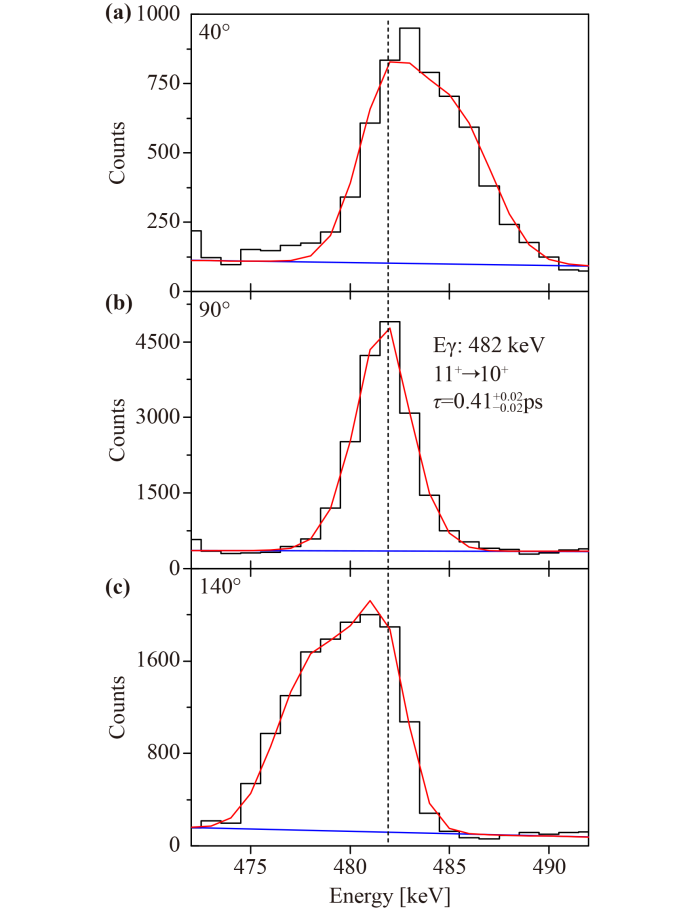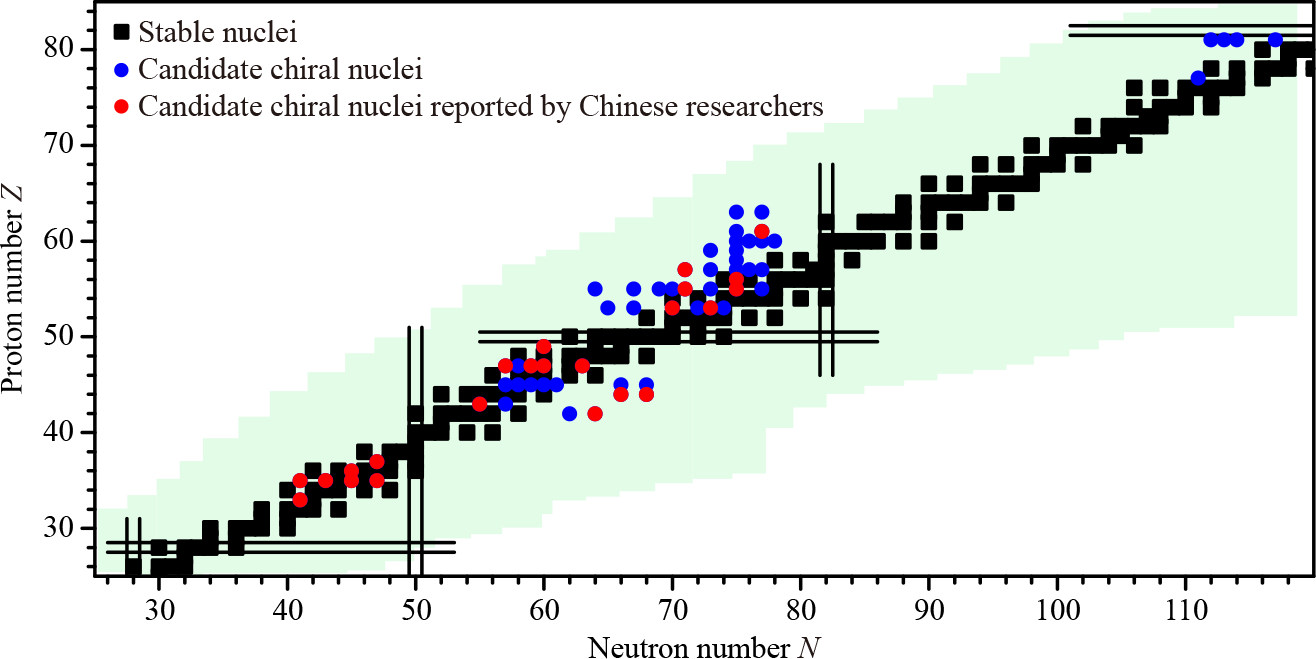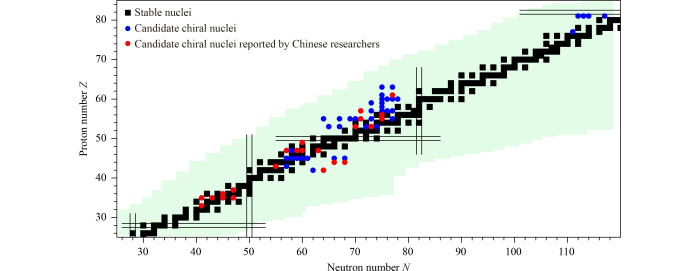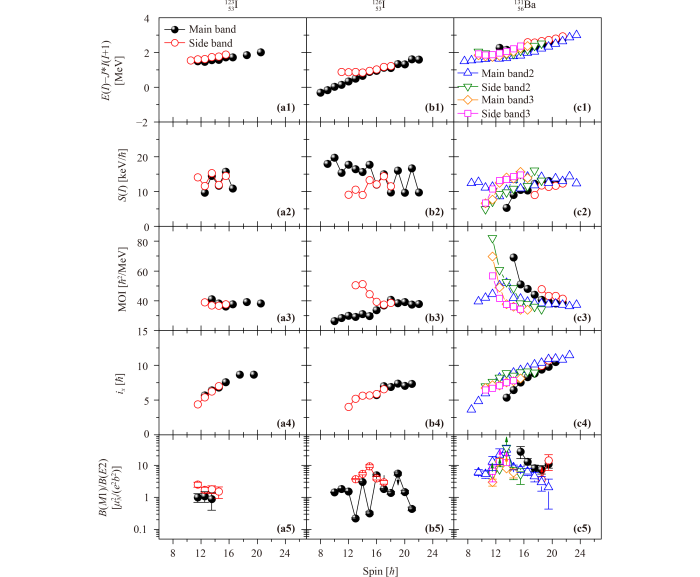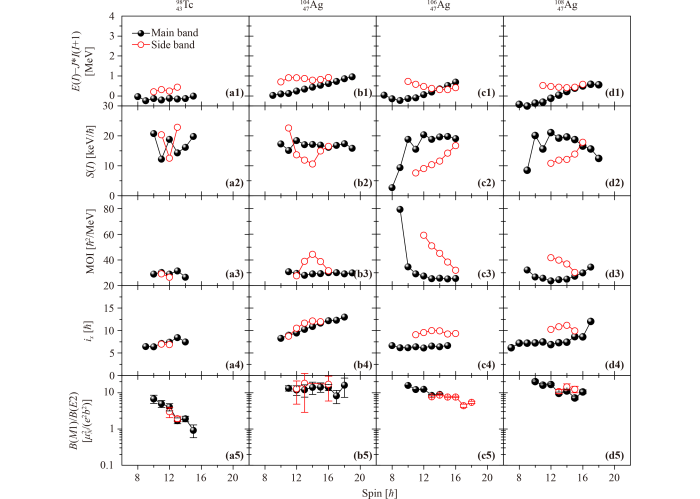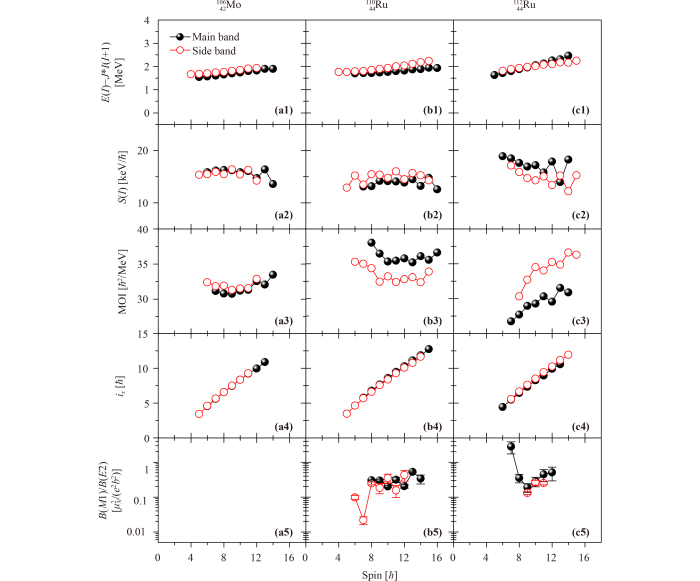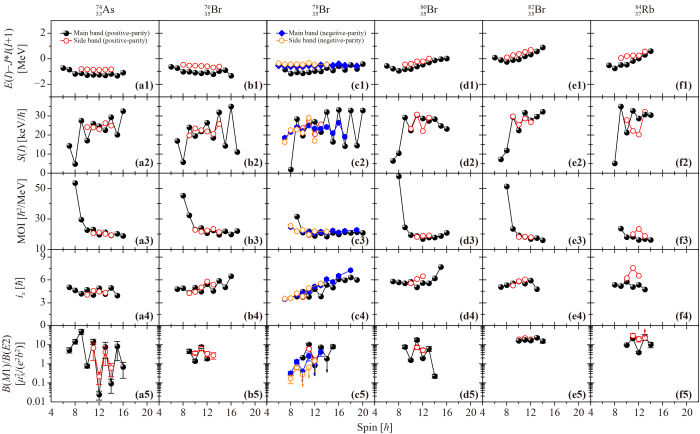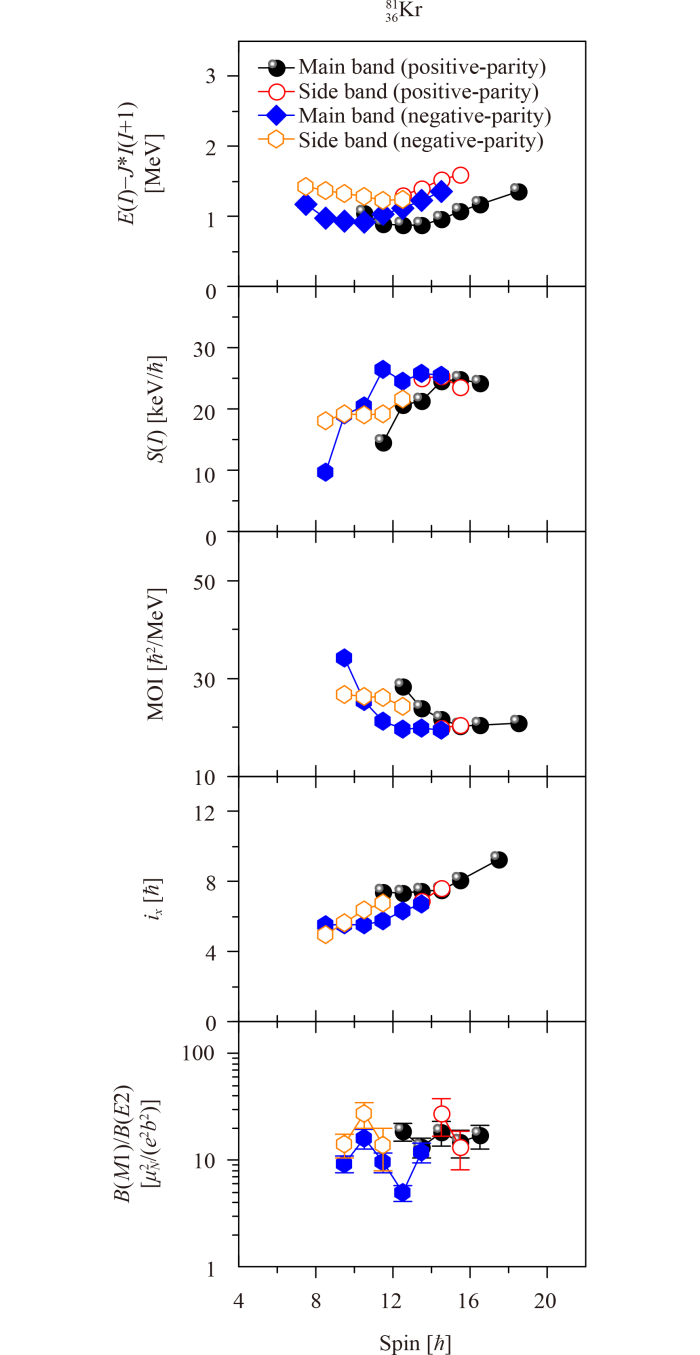In 2011, candidate chiral doublet bands was observed in
80Br [
17], which provided the first example for chirality in the
mass region, and gave a new chiral configuration
. Up to now, in Br isotopes, the similar positive-parity chiral doublet bands with the
configuration were found in
76Br [
15],
78Br [
16] and
82Br [
19], and a pair of negative-parity chiral doublet bands were found in
78Br based on the
configuration [
16]. The
,
,
, MOI and
ratios for candidate chiral doublet bands of odd−odd nuclei in the
mass region are shown in Fig.8. As shown in Fig.8, the positive-parity candidate chiral doublet bands with the
configurations in Br isotopes maintain an energy difference
of ~ 0.4 − 0.6 MeV and the negative-parity candidate chiral doublet bands with the
configuration in
78Br maintain an energy difference of ~ 0.15 MeV over the observed spin range. In addition, the
show an almost constant value of ~ 25 keV/
at 8
I 14
for these doublet bands. The MOI,
and
values of these doublet bands are very similar. Meanwhile, the
values show odd−even staggering as a function of spin. It should be noted that the
for the candidate chiral doublet bands with the
configurations show a decreasing trend as
increases in Fig.8. The
of candidate chiral doublet bands may reflect the chiral geometry, i.e., more stable chiral geometry corresponds to the smaller energy difference. With an increase of the neutron number
in these odd−odd Br isotopes, the neutron Fermi level approaches the top of the
subshell, and the growing occupancy of neutrons in the
orbital (gradually approaching the ideal hole) will result in more stable chiral geometry. Therefore, the smaller
in odd–odd Br isotopes with larger
can be understood as these Br isotopes with larger
are more suitable for constructing chiral geometry than those with smaller
.

